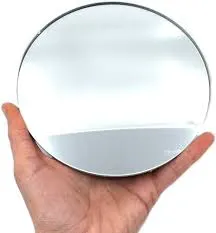

The Elegance and Functionality of Frosted Glass Treatment
Frosted glass treatment has gained significant popularity in interior design and architectural applications, creating a harmonious blend of aesthetics and functionality. This versatile material transforms ordinary glass into a sophisticated design element, providing privacy while allowing light to pass through. In this article, we explore the different types of frosted glass treatments, their applications, benefits, and the rising trend of incorporating them into both residential and commercial settings.
Understanding Frosted Glass
Frosted glass is created by sandblasting, acid etching, or applying a frosted film to clear glass surfaces. This process creates a translucent finish, softening harsh light and obscuring visibility while maintaining a bright and airy environment. Depending on the method used, the degree of frosting can vary, from a subtle haze to a more pronounced texture.
Sandblasting involves shooting fine sand at the glass surface to create a rough, matte finish, while acid etching utilizes a chemical process to achieve a similar effect. Frosted films, on the other hand, provide a temporary solution that can be easily applied and removed, making it a popular choice for renters or those seeking a non-permanent option.
Applications of Frosted Glass
Frosted glass is exceedingly versatile, making it suitable for a variety of applications. Here are some of the most common uses
1. Bathroom Privacy One of the most popular uses for frosted glass is in bathrooms, where privacy is paramount. Frosted glass can be used for shower doors, windows, and partitions, ensuring that light enters the space without compromising privacy.
2. Office Partitions In commercial spaces, frosted glass is often utilized for office partitions. It provides a sense of openness while creating separate workspaces. This is particularly beneficial in modern office designs that prioritize collaborative environments.
3. Cabinet Doors Frosted glass can also enhance the elegance of kitchen or display cabinets. This treatment allows homeowners to showcase decorative dishware or collections, while also providing a level of obscurity that keeps clutter hidden.
4. Sliding Doors Incorporating frosted glass in sliding doors is a chic way to facilitate transitions between spaces. Whether leading to a patio, closet, or office, these doors enhance the flow of natural light while ensuring privacy.
5. Windows For homeowners looking to add uniqueness to their windows, frosted glass provides an artistic flair. It can create a stunning focal point while still allowing natural light to flood into a room.

Benefits of Frosted Glass Treatment
The use of frosted glass treatment comes with a plethora of benefits, making it an attractive choice for modern design
- Privacy The primary advantage of frosted glass is its ability to shield occupants from prying eyes without completely blocking light. This is particularly treasured in homes and workplaces where privacy is a concern.
- Light Diffusion Frosted glass diffuses light, reducing glare and creating a softer visual ambiance. This quality is especially beneficial in spaces where harsh direct light can be uncomfortable.
- Aesthetic Appeal Frosted glass adds a touch of elegance and sophistication to any setting. Its modern look elevates both residential and commercial interiors, making them more visually appealing.
- Easy Maintenance Frosted glass is relatively easy to maintain as it does not show fingerprints and smudges as readily as clear glass. A simple wipe with a damp cloth is often enough to keep it looking pristine.
The Trend of Frosted Glass Treatment
In recent years, the trend of using frosted glass treatments has surged, fueled by a growing interest in minimalist design and open-concept living. Homeowners and designers alike are embracing the aesthetics and practicality of this material. Additionally, as environmental consciousness rises, more people are considering energy-efficient designs that maximize natural light, making frosted glass an ideal choice.
Moreover, technological advancements have expanded the possibilities of frosted glass. Innovative features such as smart glass, which can change from clear to frosted with the touch of a button, are becoming increasingly popular for those seeking to combine privacy with modern technology.
Conclusion
Frosted glass treatment stands at the intersection of beauty and practicality, making it a favored choice in contemporary design. Whether utilized in homes, offices, or public spaces, its ability to provide privacy while allowing light to flow unimpeded is unmatched. As trends evolve, the demand for frosted glass applications is likely to continue growing, driven by innovation and a desire for aesthetically pleasing, functional environments. With its myriad advantages, frosted glass promises to remain a staple in the world of design for years to come.